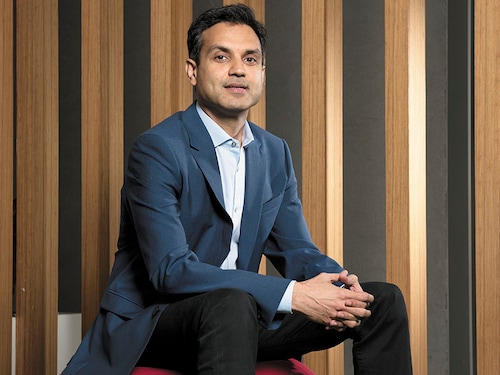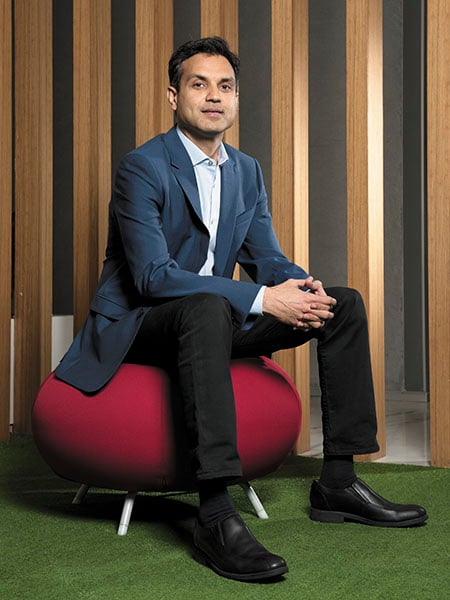India has the scope to go straight to the cloud: Microsoft India president
Even small businesses can leapfrog to pay-as-you-go models using the cloud, says Anant Maheshwari



Anant Maheshwari, Microsoft India president
Image: Amit VermaQ. Is the cloud momentum in India in line with what’s happening in advanced markets? What is different here?
Almost all the 14 geographical areas around the world in which Microsoft operates have similar growth rates on the ground. It’s just that each of these markets started at a different point. Therefore it’s a secular trend.
There are areas that are already a large base and still continue to grow fast. It is incumbent upon us in India to accelerate and create the same scale.
Adoption of cloud technologies in India, as in other geographies, has come in many ways. One is pure-play infrastructure, which comes from startups as well as companies that already have large private clouds and are therefore migrating to the public cloud.
Much more than that is the move to the modern work place that is changing the cloud. For the first time, Office 365 on the cloud is surpassing Microsoft Office suite, which is used on-premises. That is a big marker of where the world is headed.
The third area in which I expect the cloud to pick up in a big way, and India is beginning to do that, is that the business applications—CRM, ERP and other broader business ones—will all go on the cloud. And with GST in place, that will only get more enabled because every business, small and big, will need to connect with the cloud either directly or indirectly to get the benefit of this connected transaction framework that we’re putting in place.
Q. When it comes to cloud adoption, how did India start and where is it today?
It is similar to our telephony revolution. India had a small base of wired telephones before mobiles came along, completely bypassing wired telephony.
Likewise, India has significant on-premises data infrastructure, but it’s nowhere in the same ballpark as developed economies. India has the scope to go straight to the cloud. How many companies here have large CRM or ERP databases on-premises? A large part of our SMBs [small and medium-sized businesses] don’t use these. As they build these capabilities, they can leapfrog to pay-as-you-go models using cloud-based applications.
We are already seeing this beginning to happen with our network of ISVs (independent software vendors).
Q. How do you approach India as a market? Do you need to do things differently here?
Yes and no. A lot of our global experience can be directly applied. The move to Office 365 in India—among large business users for example—will be for the same reasons as in other economies.
On the other hand, some aspects are unique to India. Look at our half-a-billion working population of which less than 20 percent use email to get work done. The rest are probably hardly using any digital solutions. In developed economies, the ratio might be reversed.
A product like Kaizala [Marathi for ‘what happened?’] is an example of how we’re doing things differently in India. We developed it for India, and it brings in the power of mobile instant messaging and social media to the workplace and integrates well with Office 365. What’s unique about it is that you can get a free version or buy the Kaizala Pro version for
130 per user per month.This is becoming increasingly real-time. We have been implementing a global sales transformation within Microsoft over the last 6-12 months and the focus has been on freeing up time for people internally so that they can spend more time with customers and partners. Everything that we are doing is transitioning us from just being a technology and product-enabled organisation to a customer and partner-focussed one.
Q. What are your biggest customers’ top concerns?
If I look at the technology platforms that our customers are tapping, there are three areas. One is, what scale do they need? It’s easier to do something as a controlled experiment, but when it comes to their mainstream business, the costs and the value generation from these platforms could be significant and they may not have those capabilities. So, how do they manage the scale.
The second is flexibility. Today, it is difficult for a CIO to predict what his architecture will look like in five years’ time, because technology is evolving rapidly. The third is security and confidentiality.
Q. How will India change with increased adoption of cloud technologies? What kind of a country can we be?
In health care, Microsoft’s collaboration with LV Prasad Eye Institute, Hyderabad in applying machine learning to improve the success rate of eye surgeries is a good example. At the level of an individual patient, one doesn’t have to pay thousands of rupees, but only tens of rupees to get the benefits of the insights generated from applying machine learning to the problem.
In education, a few state governments are using our predictive modelling to reduce student dropout rates by generating early warning information about those who are at a higher risk of dropping out.
In farming, machine learning can help farmers predict much more accurately the best time of sowing, which can boost yields by as much as 30-40 percent.
In automobiles, it won’t be just about getting connected to our smart devices, but also about improving safety and lowering the overall cost of ownership with all these sensors and IoT platforms to give us a sense of what’s the best way to run that vehicle.
In retail, we are seeing around ourselves the capability to understand what we want, how we want and at the point at which we want something. This is going to change our experience as consumers. In banking and financial services, the cloud is going to be used in a big way not just in payments but also in tailor-made financial products.
First Published: Sep 05, 2017, 06:50
Subscribe Now